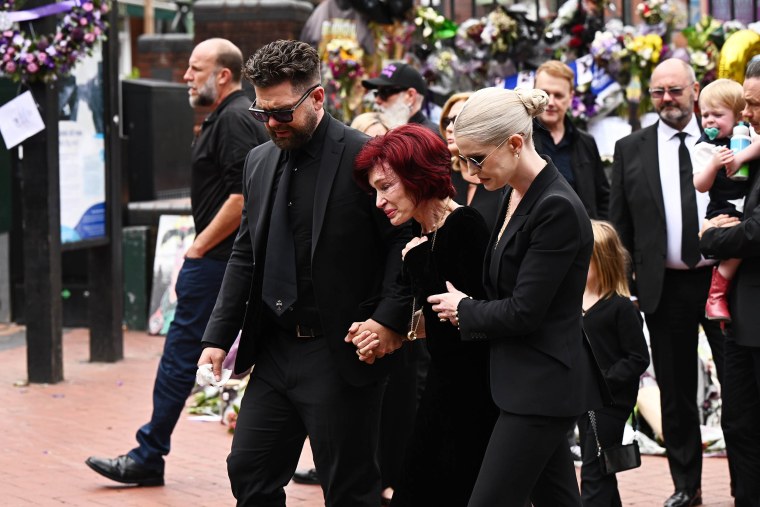The Final Ballad: Bruce Springsteen Walks Ozzy Osbourne Home
At 75 years old, Bruce Springsteen walked beside the hearse, each step slow, steady, and laden with sorrow. Time had etched lines deep into his face, but none as sharp as the grief that now settled in his expression. Clad in a tailored black suit, his familiar black cowboy hat pulled low over his eyes, Springsteen carried in his hands a framed photo — a portrait of his late friend, Ozzy Osbourne — the Prince of Darkness, now returning to rest in the city where his voice was first heard, and where his legend first began: Birmingham.
The skies mirrored the moment. Heavy clouds hung low, draping the city in shades of mourning. A soft drizzle threatened, as though nature itself struggled to contain its grief. The streets, once alive with the electric echo of Ozzy’s voice, now stood still. From rooftops, balconies, and silent screens across the world, millions watched. The silence was deafening. And in that silence, Bruce Springsteen’s presence spoke more than any eulogy ever could.

His hands, once steady enough to hold the weight of generations in song, now trembled around the wooden frame. His eyes, so often sharp and full of steel resolve, glistened with unshed tears. When they did fall, they did so freely. Unhidden. Unapologetic. Bruce didn’t need words. He had shared decades with Ozzy — not always in the same genre, not always on the same stage — but in the same fight: the fight to stay true to music, to self, to soul.
Behind him, a sea of black-clad mourners followed. Rock legends walked beside punk icons, metal heads brushed shoulders with pop stars, and behind them came ordinary fans — grandparents, teenagers, entire families — bound together by the voice that had once screamed rebellion, whispered pain, and sang of survival. All of them dressed in black. All of them quiet. Their footsteps were the rhythm of remembrance.
Leading the procession, Sharon Osbourne clutched Ozzy’s portrait like a lifeline, tears breaking from her in waves. Her children, Kelly and Jack, held her tight, forming a fragile fortress of grief around their mother. Their faces were pale, their bodies swayed with the weight of mourning, but their grip on one another was fierce. They weren’t just saying goodbye to a husband and father — they were saying goodbye to the axis around which their lives had spun for decades.

As the funeral procession wound its way through the streets of Birmingham, people stood with heads bowed. Some held candles. Others held vinyls, concert tickets, old posters — physical tokens of memories that now felt like sacred relics. No one cheered. No one sang. Not yet. The silence wasn’t absence — it was reverence.
Finally, at the city’s edge, they arrived at the resting place. A hush fell, not imposed but instinctive, as though every heart present understood the gravity of this chapter’s end. The casket was lowered with slow grace, and the framed photograph Bruce had carried was placed on a pedestal beside it — Ozzy’s eyes looking out one last time on the city that had birthed him.
A soft wind stirred. Somewhere, a church bell rang.

And just before the final prayer, Bruce Springsteen stepped forward. His voice was rough — not from age, but from holding back emotion. He didn’t give a speech. Instead, he whispered into the microphone:
“You were the wild howl in a quiet world, Ozzy. Rest now, brother. The song never ends, but tonight… the stage goes dark.”
Then he stepped back, and silence reclaimed the day.
This was not the end of Ozzy Osbourne.

This was the final chord of a symphony that will echo forever — in arenas, in bedrooms, in car radios, in vinyl scratches, in stories passed between fathers and daughters, between best friends and old bandmates, between fans who found solace in the madness.
The Prince of Darkness walked into legend.
And Bruce Springsteen — The Boss — had the honor of walking him there.

